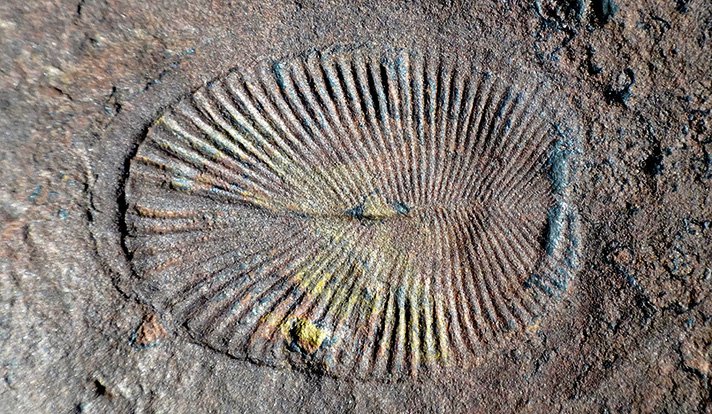
July 16, 2018
Research Highlight
Ocean Anoxia and the Decline of the Ediacara Biota

An example of a fossil from the Ediacara Biota.Image credit: James Gehling.
Scientists have examined whether or not a lack of oxygen in Earth’s oceans contributed to the decline of Ediacara biota on Earth some 541 million years ago. The ‘Ediacara biota’ refers to a collection of marine fossils that originate from the Ediacaran Period (~635 to 541 million years ago), and can be found around the globe. These fossils represent the earliest known community of complex organisms in Earth’s oceans.
To study ancient ocean anoxia, the research team measured uranium (U) isotope compositions in samples from the Dengying Formation in China. The data indicates that the Ediacaran ocean did experience episodes of extensive anoxia. There were times when anoxic conditions covered more than 21% of the seafloor, and in these conditions, U was sequestered in the sediments below. The results support the idea that ocean anoxia could have contributed to the decline of Ediacara biota. In addition, anoxic periods may have stimulated the evolution of animal motility.
The study, “Extensive marine anoxia during the terminal Ediacaran Period,” was published in the journal Science Advances. The work was supported by NASA Astrobiology through the Exobiology Program.